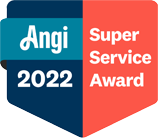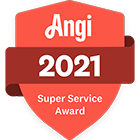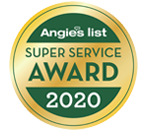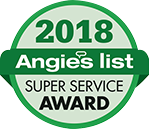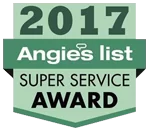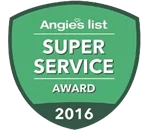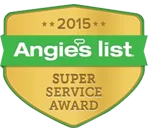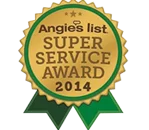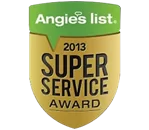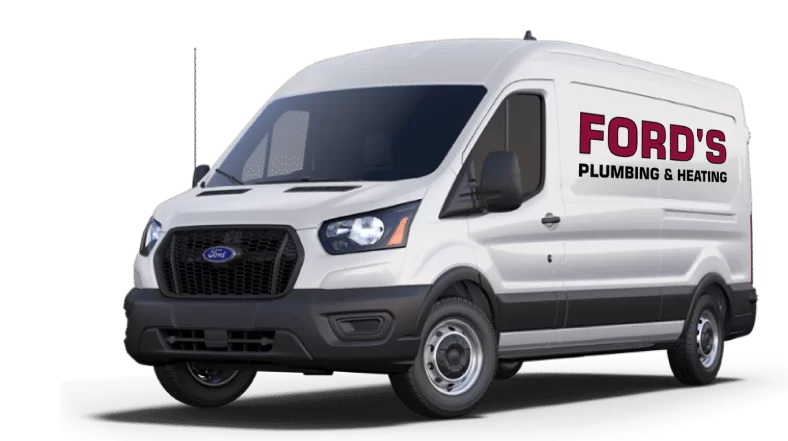This is the third and last of our three part series on the environmental damage caused by the bottled water industry, the health and safety concerns of tap water throughout Southern California and healthy, eco-friendly alternatives to both bottled and tap water.
Most of us are aware that the human body is 70% water, thus making water consumption essential for our survival and health. Seeking out the cleanest and healthiest water source for ourselves and our families should be a top priority, but many Southern California residents aren’t aware or aren’t concerned about the quality or safety of the water we drink, shower in or cook with daily etc…
Exploring ways to take better care of ourselves and our families is always a worthwhile endeavor and improving the quality, safety and cleanliness of our tap water is something that effects us as well as future generations of Southland residents.
Three Basic Choices of Water to Drink on a Daily Basis:
1. Bottled Water
2. Tap Water
3. Alternatives to Bottled & Tap Water
1. Bottled Water – As clearly shown in Part One, the only good thing about bottled water is convenience, whereas the list of negative or bad attributes is extensive to say the least. Bottled water is less regulated than tap water, has as many or more contaminants as tap water and costs up to a thousand times more.
In addition, the plastic bottles leach nasty chemicals into our bodies and the 60 million plastic bottles that are disposed of in the U.S. each day has polluted our environment to such an extent that it may never recover. Needless to say, bottled water is not a viable day to day option for water consumption.
2. Tap Water – Unfortunately, the water flowing out of our home faucets for everyday drinking, bathing and cooking etc…isn’t much better than bottled water.At the very least, every cup of treated water entering our homes contains lead, chlorine, fluoride, arsenic, unhealthy sediment and any number of toxic man-made chemicals, pharmaceuticals and industrial waste products etc…
Our tap water is also known to contain low levels of steroids, hormones and pesticides along with radioactive particles and known cancer causing elements such as Trihalomethanes etc…
California is the #1 ranked state for Toxic Tap Water and as it stands today, California’s tap water is not completely clean nor is it free of cancer causing chemicals and substances. Armed with that knowledge, our nation’s city, state and federal officials don’t seem to have a problem deeming the levels of contamination in our tap water “acceptable”and telling us that our tap water is “fit to drink.” Not an Acceptable Option – Drink at Your Own Risk!
3. Alternative Options to Bottled & Tap Water – The perfect or ideal water would be free of all contaminants, but retain all of the mineral richness that Mother Nature intended it have. You can’t get that with bottled water and it’s not going to happen with water straight out of the tap.
There are lots of affordable and eco-friendly alternative methods for transforming contaminated tap water into a cleaner, safer and healthier water that’s suitable for human consumption. The criteria used for this particular blog included overall popularity, effectiveness, affordability, consumer awareness, product quality and the manufacturer’s reputation for delivering high levels of customer satisfaction.
The best of the best effective and affordable alternative methods of transforming contaminated tap water into safer, healthier, less contaminated and better tasting water suitable for human consumption are water filtration, purification, distillation, reverse osmosis, ionization and sediment filters.
Simply put, the only way to guarantee the quality and safety of your home’s drinking, showering and cooking water supply is by taking matters into your own hands and Take Back Control of Your Tap!
Take Back Control of Your Tap with Filtration That Meets Every Need, Every Budget & Every Family
We reviewed over one hundred different water filtration units from fifteen of the most highly regarded water filtration manufacturers in order to provide our readers with a cross section of the most effective and affordable alternatives to tap and bottled water available in today’s marketplace.
The filtration systems listed below have all proven effective in reducing or eliminating tap water odors, contaminates, preserving natural minerals and improving taste to one degree or another. The pros, cons and benefits of water filtration systems vary widely, but they all share one thing in common; they make our tap water safer, healthier and less contaminated.
Any step that helps improve the health and safety of ourselves and our family is worth taking, even if it’s as small as a water filtering pitcher or carafe.
Carbon Water Filtration Systems & Filters
Carbon water filtration systems and filters are easy to install, affordable and the most popular method to filter tap water in both the private and public sector. There are two basic types of carbon filtration systems:
1. Solid Carbon Block
2. Granulated Activated Carbon (GAC)
1. Solid Carbon Block – Recognized by the EPA as the best option for removing chemicals like herbicides, pesticides and volatile organic chemicals VOCs. Solid Carbon Block and Granulated Activated Carbon are the two most common methods of water filtration used throughout the U.S. today.
They work by super heating a carbon extrusion until it becomes a solid, but porous block. The solid block of carbon provides the properties of a sediment filter, while also increasing surface area.
They use the process of adsorption and absorption as their primary methods of filtration and contaminant removal. Contaminants, toxins and unwanted chemicals are drawn to the carbon filter and physically bond themselves to its surface.
The solid carbon block can be significantly slower than granulated activated charcoal, but it level of contaminant and toxin removal is much higher. Carbon solid block filters remove chemicals, pesticides, bacteria, fluoride, heavy metals, nitrate, nitrites and parasites.
They can safely transform any type of water into safe drinking water including rain water, pond water, sea water and can even filter out food coloring to create clear drinkable water. These systems tend to have a larger upfront cost than other systems, but they require fewer filter replacements and are the least expensive to operate which makes them the most cost effective long term filtration solution.
One of the most impressive aspects of solid carbon blocks is that they don’t remove the naturally occurring minerals from water, thus making it the best tasting filtered water option available.
Pros – Filters volatile organic chemicals VOCs, heavy metals, chlorine, fluoride, nirates, nitrites, bacteria, parasites and other chemicals. Very inexpensive per gallon cost and minimal filter replacements are required. Wide variety of sizes including under the sink, counter top and Whole House units. Provides great tasting water and doesn’t require electricity or water pressure to function. Portable options are available for use while traveling or on extended vacations.
Cons – Bigger upfront cost, larger models require counter space and have to be filled manually.
2. Granulated Activated Carbon (GAC) – These water filters are very affordable, easy to install and extremely popular. These are the “filters of choice” for some of the biggest brand names in the water filtration industry including Brita, Pur and Aquasana.
Granular activated carbon filters use absorption as their basic process for contaminant and toxin removal and have a large selection of “Point of Use” units to choose from including pitchers, carafes, countertops, faucet attachments, under-the-sink mounting and whole house systems.
The carbon granules come in various sizes depending on the application. Finer granular sizes have more surface area but can also produce a channeling effect. They remove most of the deadly contaminants, toxins and sediment particles including chlorine, chloramine, endocrine disruptors, pharmaceutical drugs, pesticides and disinfection by-products and improves the taste of tap water, but are not as effective in removing volatile organic chemicals VOCs, heavy metals or fluoride as Solid Block Carbon Filters are.
They are incapable of removing heavy metals, such as copper and lead are their own. Heavy metal water sources include older houses and public works using lead pipes which are known to leach lead into drinking water. This problem can be solved by adding a KDF filter to that kills heavy metals and microorganisms.
Granulated Activated Carbon filters wear down and become less effective over time and regular filter replacements are essential for good performance.
Pros – Popular for home use as it is economical, easy to install, and effective at filtering out many deadly contaminants. Can be used in pitchers, faucet attachments and whole house filtration.
Cons – Does not completely remove arsenic, fluoride and nitrates. Very susceptible to mold attacks.
Dual or Multi-Stage Water Filter Systems – Dual or Multi- Stage systems combine the most effective characteristics and attributes of one filtration system with those of one or more other systems.
Some of the most common and effective Multi-Stage water filtration systems combine the best qualities of solid carbon block or activated granular carbon filters with the most desirable advantages of reverse osmosis or distillation.
No one water filtration system can offer consumers the vast array of benefits that a Multi-Stage system can. They can produce truly healthy, filtered, uncontaminated and great tasting drinking water at the convenience of your kitchen tap. They filter and remove the most dangerous and known contaminants including copepods, chlorine‚ lead‚ synthetic chemicals‚ volatile organic chemicals VOCs, THMs‚ MTBE, Turbidity and Cysts etc…yet they leave in all of mother nature’s important trace minerals for natural, healthy and great tasting water.
Reverse Osmosis – Reverse osmosis is a valuable water purification process when mineral-free water is the desired end product. Reverse Osmosis uses pressure to push water through a semi-permeable membrane that blocks particles larger than water molecules.
Most mineral particles of water are physically larger than water molecules, so they are trapped by the semi-permeable membrane and removed from drinking water when filtered through a reverse osmosis system. Such minerals include salt, lead, manganese, iron and calcium along with some chemical components of drinking water, such as fluoride.
Good water pressure is needed to “push” water through the semi-permeable membrane that blocks particles larger than water molecules. Low water pressure will result in reduced production and premature fouling of the membrane.
A good pressure for operating an R.O. system is around 60 PSI. Pressure below 40-45 PSI is generally considered insufficient, but you can add a pressure booster pump to improve performance.
The more pressure you have, the better your R.O. system will work. 60 psi or higher will enable the R.O. system to produce pure water at a higher rate and of a higher quality. Older R.O. Systems can’t operate when the water pressure is cut off, but most newer models have an attached 2-4 gallon pressure tank to allow your system to work even if the water is suddenly shut off.
Reverse osmosis removes many contaminants that activated carbon does not including arsenic, fluoride, hexavalent chromium, nitrates and perchlorate.
However, reverse osmosis does not remove chlorine, extremely harmful trihalomethanes or volatile organic chemicals (VOCs). To remedy that problem, many reverse osmosis systems add an activated carbon component than can remove the contaminants that Reverse Osmosis can’t on its own.
The quality of the osmosis membrane system and the carbon filter component vary widely. Consumers should also know that reverse osmosis systems use three to twenty times more water than they produce and are best used for drinking and cooking purposes only.
Pros – Removes a large amount of contaminants. Can be mounted under the sink and have a simple spigot over the counter for getting the water. They reduce arsenic, asbestos, fluoride and heavy metals.
Cons – Completely removes all natural and healthy minerals from tap water. Wastes 2-3 times more water than it produces. Does not reduce volatile organic endocrine disruptors. Takes up to an hour to filter one gallon of water and filters need to be replaced regularly.
Water Distillation Systems – The distillation process uses heat to cause the water to become steam. The steam rises and moves to a cooling chamber where it turns back into liquid, leaving behind many contaminants. The process removes large particles like minerals and heavy metals, but does not remove endocrine disruptors or VOCs since they vaporize at equal or lower temps than water and rise with the steam. It does effectively kill bacteria along with natural minerals and is not recommended to be consumed on a regular basis.
Pros – Removes a large amount of contaminants. Does reduce arsenic, asbestos and heavy metals. Does remove fluoride.
Cons – Does not reduce VOCs or endocrine disruptors. Home distillation systems are often large and expensive. The use large amounts of electricity and will not work in poweroutages. Drinking distilled water increases the acidity in our body, doesn’t hydrate as well as mineral rich water and can rob our bodies of natural minerals.
Ceramic Water Filters – Ceramic water filters are an inexpensive and effective type of water filter, that rely on the small pore size of ceramic materials to filter dirt, debris and bacteria out of water.
As with most filtration methods, water is poured in one side of the filter, which acts to block the passage of anything larger than the pore size. Typically bacteria, protozoa and microbial cysts are removed, but the filters are not effective against viruses since they are small enough to pass through to the other “clean” side of the filter. Ceramic water filters (CWF) may be treated with silver in a form that will not leach away. The silver helps to kill or incapacitate bacteria and prevent the growth of mold and algae in the body of the filter.
Ceramic filtration will not remove chemical contaminants on its own, but many ceramic filter manufacturers incorporate high-performance activated carbon cores inside the ceramic filter cartridges. This reduces organic & metallic contaminants and the active carbon absorbs compounds such as chlorine. Active carbon filters need to be replaced regularly in order to maintain filtration performance.
Ceramic filter systems consist of a porous ceramic filter that is attached to, or sits on top of a plastic or ceramic receptacle. Contaminated water is poured into the top container and passes through the filter or filters into the receptacle below. The lower receptacle usually is fitted with a tap.
Light weight ceramic filters are popular with hikers and campers, used to that gather water that may have potentially harmful microbes. Flow rate of ceramic water filters are slow.
As the top layer of ceramic material becomes clogged with contaminants they can be scrubbed off and flushed away, thereby creating a new layer ready for filtering.
Pros – Removes 95% of chlorine, pesticides, iron, aluminum and lead; and 99% of cryptosporidium, guardia & sediment.
Cons – Does not remove fluoride. Often produces a slow water flow.
This concludes our three part blog series on the state of Southern California’s water supply, but we would like to add some closing remarks on the entire series before signing off.
Part One, Just Say No to Bottled Water – There is literally no viable excuse to debate or oppose the fact that the continued use of bottled water will have a severe and adverse affect on our health, our resources and our environment. The only benefit that bottled water has to offer is convenience and saying no to bottled water is the very least that any of us can and should do!
Part Two, How Safe is Your Tap Water? – It would be a truly wonderful thing if the water flowing into our homes was safe, healthy and free of contaminants and toxins that might cause or increase the risk of numerous cancers and damage our central nervous system, liver, kidneys and heart.
Unfortunately, we’ve tainted every water source on the planet and all water is now contaminated to some degree. City, state and federal officials don’t deny that our tap water is contaminated, but they contend that the low levels of toxins, pesticides, animal feces and assorted poisons in our tap water are at “acceptable levels” and they deem it “fit for human consumption.”
We’ve seen and heard this song and dance too many times in the past, but the decision on whether to drink water straight from the tap or not is yours and yours alone. However, we would like to pass on the following message to our friends, neighbors and customers:
Part Three, Healthy, Eco-friendly & Affordable Alternatives – It’s always worthwhile to explore concepts and ideas that may improve you and your families health, safety and well being, including tap water filtration.
There’s no denying the fact that even the smallest form of water filtration, such as a water filtration pitcher or carafe, removes unhealthy contaminants and makes tap water taste better, so why is trying something new so hard for so many of us even when that something is in our best interests.
We wouldn’t be writing blogs if we had the answer to that question, but we can encourage our readers to try new things that are worthwhile and safer, healthier and better tasting tap water certainly qualifies as worthwhile.
Once again, this concludes our three part series on the environmental damage caused by the bottled water industry, the health and safety concerns of tap water throughout Southern California and healthy, eco-friendly alternatives to both bottled and tap water.
We hope you enjoyed reading the series as much as we enjoyed writing it. If you missed a part or want to revisit a particular section, you can view a part or the entire series by visiting us at our blog.
THIS THREE PART BLOG SERIES WAS
SPONSORED BY FORD’S PLUMBING & HEATING
Looking for Cleaner, Healthier & Better Tasting Water?
You’ve come to the right place, FORD’S has been filtering, purifying & making water taste better throughout the Southland since 1963. Call FORD’S Water Filtration Experts today at 310-815-1515 to find out which filtration system is right for you, your budget and your family.
Every Family Deserves Safe, Healthy & Good Tasting Water


